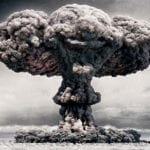 Movies and TV
Movies and TV  Movies and TV
Movies and TV  Creepy
Creepy 10 Lesser-Known Shapeshifter Legends from Around the World
 Animals
Animals 10 Amazing Animal Tales from the Ancient World
 Gaming
Gaming 10 Game Characters Everyone Hated Playing
 Books
Books 10 Famous Writers Who Were Hypocritical
 Humans
Humans 10 of the World’s Toughest Puzzles Solved in Record Time
 Mysteries
Mysteries 10 Scientific Mysteries We Don’t Fully Understand
 Weird Stuff
Weird Stuff 10 Celebrities Who Have Admitted to Alien Encounters
 Our World
Our World 10 Surprising Secrets of Notre Dame Cathedral
 Miscellaneous
Miscellaneous 10 Intriguing Origins of Popular Carnival Rides
 Movies and TV
Movies and TV 10 Actors Dragged out of Retirement for One Key Role
 Creepy
Creepy 10 Lesser-Known Shapeshifter Legends from Around the World
 Animals
Animals 10 Amazing Animal Tales from the Ancient World
Who's Behind Listverse?

Jamie Frater
Head Editor
Jamie founded Listverse due to an insatiable desire to share fascinating, obscure, and bizarre facts. He has been a guest speaker on numerous national radio and television stations and is a five time published author.
More About Us Gaming
Gaming 10 Game Characters Everyone Hated Playing
 Books
Books 10 Famous Writers Who Were Hypocritical
 Humans
Humans 10 of the World’s Toughest Puzzles Solved in Record Time
 Mysteries
Mysteries 10 Scientific Mysteries We Don’t Fully Understand
 Weird Stuff
Weird Stuff 10 Celebrities Who Have Admitted to Alien Encounters
 Our World
Our World 10 Surprising Secrets of Notre Dame Cathedral
 Miscellaneous
Miscellaneous 10 Intriguing Origins of Popular Carnival Rides
10 Drugs Less Deadly Than Alcohol
Moonshine. Vino. Liquid Courage. Alcohol goes by many names. On December 5, 1933, Prohibition came to a close in the United States with the passage of the 21st Amendment. Ever since, alcohol, and its promise of temporary euphoria, have filled pubs and restaurants across the country. Yet, the cost of the United States’ collective hangover is more than just a bad migraine. JAMA Psychiatry found that rates of alcoholism ballooned 49 percent in the first decade of the new millennium, with nearly one in eight Americans demonstrating alcohol dependence.
Even in the midst of the country’s burgeoning opioid crisis, alcohol remains the third most prevalent cause of preventable death in the United States. With 88,000 alcohol-related deaths annually, only poor diet/physical inactivity and tobacco use rank as more lethal. And while many will argue that alcohol is only more fatal than other drugs because it is more ubiquitous, a cohort of British researchers believe it’s a more dangerous intoxicant than crack or heroin.[1]
There are several ways to calculate a drug’s danger beyond how many people it kills. One method is to measure the degrees of magnitude by which a lethal dose is greater than a “typical effective dose.” Thus, the ten drugs listed below are less deadly than alcohol by two measures. First, simply put, they each kill fewer people. Second, there’s more wiggle room between an effective dose and a lethal dose.
10 Caffeine

We don’t really know how much caffeine is a lethal dose. Research suggests that caffeine tolerance is decidedly individualized, with women more vulnerable to its effects than men.[2] Caffeine is a central nervous system stimulant and is the only psychoactive drug that isn’t stringently regulated.
This is where it’s important to distinguish between caffeine, which can be found in many products, and coffee, a caffeine-containing beverage. The average cup of coffee is relatively benign, with almost 100 milligrams of caffeine. Even decaffeinated coffee has a couple milligrams of the stuff.
That said, there have been oddball cases in the press of people overdosing on caffeine. This tends to happen when it’s in irregular forms (think caffeine pills or powder) and individuals take an excessive amount in rapid succession. You would have to drink an obscene amount of coffee to risk overdosing. If you weigh around 68 kilograms (150 lb), you’d need to be jolted with more than 50 cups of joe, at once, for it to be lethal. Still, it’s something to consider next time you order an extra shot of espresso in that macchiato.
9 Cocaine
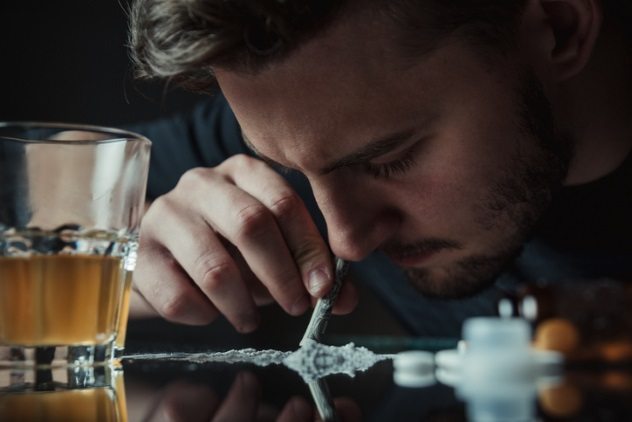
Cocaine is definitely dangerous. How dangerous? It was responsible for upwards of 7,000 deaths in 2015. Cocaine is the leading stimulant associated with overdose and death, surpassing more notorious uppers like amphetamine and crystal meth. Like caffeine, cocaine is a central nervous system stimulant and a cash crop in Latin America. Unlike caffeine, cocaine is like a lightning road to the brain’s mesolimbic pathway, where reward is processed.
Cocaine is a prime example of how drug pharmacology affects behavior and addictive potential. Cocaine works by blocking the removal of dopamine from your brain’s synapses, letting it accrue, causing feelings of intense euphoria. Of course, in excess, cocaine is associated with mood irregularities, hallucinations, septum collapse, and psychosis. So, it’s definitely a gamble. And while cocaine is less deadly than alcohol, taken in conjunction with booze, it creates something called cocaethylene. Cocaethylene is a novel drug produced by the one-two punch of cocaine and alcohol, and its toxicity levels may be 30 percent higher than cocaine alone.[3]
8 Nitrous Oxide
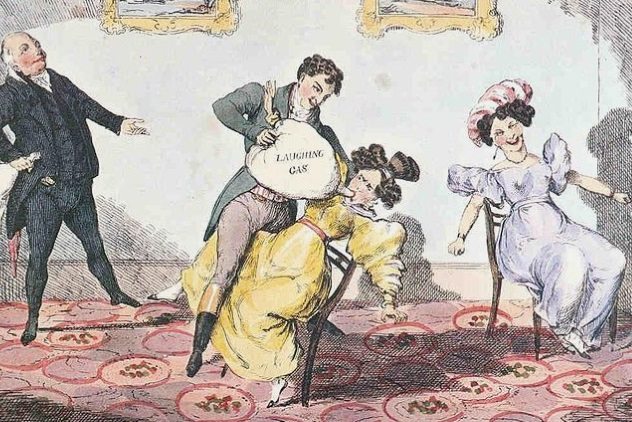
Nitrous oxide, often referred to as laughing gas, is a colorless, nonflammable gas. It comes equipped with a slight metallic odor and the ability to cause intense light-headedness. Nitrous oxide has legitimate medical uses as a pain reliever and as an anesthetic. In fact, the World Health Organization placed it on its list of essential medicines. Yet, the history of laughing gas is as much recreational as it is medicinal.
Nitrous oxide was invented at the tail end of the 1700s. It soon became a rather enjoyable party favor among Britain’s upper class. It’s a pretty hilarious concept: the idea of London’s chattering class doing Victorian-era whip-its. For this reason, the medical establishment first scoffed at the concept of using laughing gas in their profession before ultimately embracing nitrous oxide’s utility.[4] Today, you’ll find nitrous oxide not just in medical wards but also as an oxidizer in rockets and being used to increase engine output during auto races.
7 Ketamine

Often referred to as “Special K,” ketamine is notorious for being a horse tranquilizer. Despite, or because of, this reputation, ketamine use is high in the party circuit on both sides of the Atlantic. In the United States, it’s a Schedule III drug under the Controlled Substance Act and is relatively common as a pediatric and veterinary anesthetic. Ketamine is considered a disassociative anesthetic, putting it in the same league as PCP and DXM, drugs that manipulate one’s sensory perceptions.[5]
Presently, pioneering research into ketamine’s chemical properties suggest its medicinal uses are broader than as just an anesthetic. We’ve written about Ketamine at Listverse before, calling out a groundbreaking study proving that ketamine might be a once-in-a-generation medical advancement in the treatment of depression. Research at Yale University has shown that ketamine, when properly administered, can heal whole parts of the brain worn down by years of stress and fatigue. That said, ketamine, when abused, isn’t without its dangers. Overuse can lead the user into the notorious “K-Hole,” which is like a black hole, but for drugs. Cosmic.
6 Marijuana
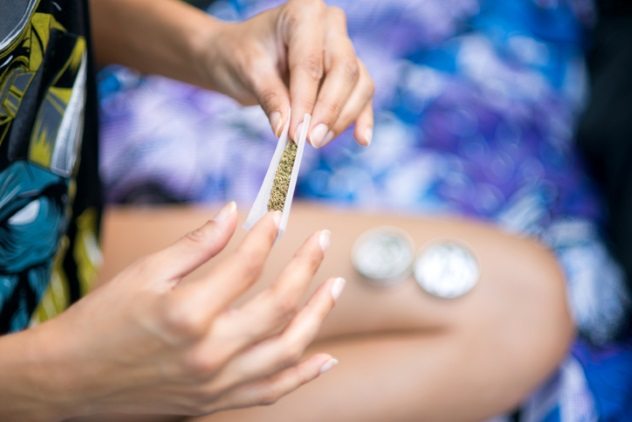
All right, we would be remiss if we didn’t mention pot. Weed. The unofficial plant of April 20th. And true to this list, marijuana is among the least menacing psychoactive drugs on the planet. That said, it remains a Schedule I drug under the antiquated Controlled Substance Act, forbidding its cultivation and use at the federal level. This hasn’t stopped individual states, such as California and Colorado, from holding referendums to legalize marijuana at the state level. In 2012, when Colorado held its vote, voter turnout topped 80 percent, the highest rate of Election Day participation in the entire nation that year. Enthusiasm for cannabis is partly tied to its medicinal uses, regardless of what the Controlled Substance Act says. Weed’s properties are proven aides to those suffering from glaucoma, epilepsy, multiple sclerosis, and anxiety, among many other aliments.
Of course, this is a list of drugs less deadly than alcohol. So, how lethal is Mary Jane? Well, it would be virtually impossible to die from an overdose. Indeed, it’s one of the few drugs on this list with no reported overdoses, ever. That’s not to say that doing something stupid, like driving down the interstate blazing on reefer, won’t get you killed. But it’s impossible for the body to consume high enough levels of THC, the active ingredient in marijuana, to cause overdose. You’d have to ingest hundreds of pounds of pot in mere minutes to die.[5] Thus, the jury’s in on this one: Marijuana is far less toxic to our bodies than alcohol.
5 MDMA

MDMA stands for methylenedioxymethamphetamine. In case you’re wondering, that word is 29 letters. MDMA, also referred to as ecstasy, is a synthetic compound first produced by German chemists in 1912.[7] Its chemical composition lands it as a cross between methamphetamine and the hallucinogen mescaline (which makes its own appearance further down on this list).
MDMA causes sundry chemical reactions in the body, exacerbated by the fact that it is often taken in conjunction with other drugs. MDMA catalyzes a rush of serotonin in one’s brain, leading to feelings of euphoria, empathy, and serenity that can last for several hours. Unfortunately, this is followed by a brutal comedown which causes feelings of depression and fatigue.
MDMA overdoses have occurred at raves and concerts, with concertgoers experiencing dehydration and, in some cases, heart failure. MDMA’s highest-risk variable is that it is rarely purchased in pure form and is instead often cut with a cornucopia of other compounds that can be toxic to an individual’s health.
4 Codeine
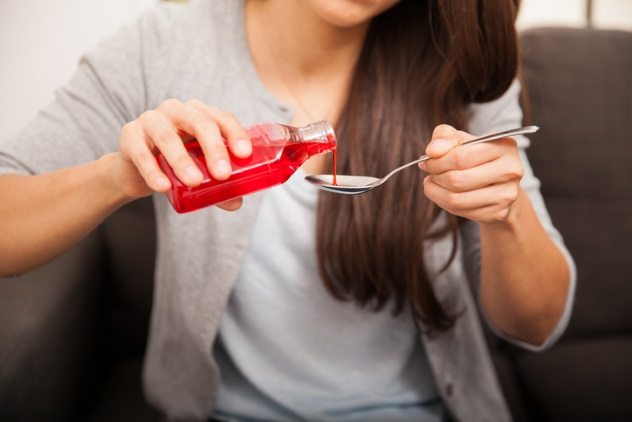
Codeine is the sole opiate to appear on this list, and as many of you know, opiates, when used properly, are meant to treat moderate to severe levels of pain. Codeine is also used as a cough suppressant, often in conjunction with acetaminophen or a non-steroid anti-inflammatory drug (NSAID). Codeine’s inclusion in cough syrup has played a part in America’s opioid epidemic. Many individuals may seek out codeine (slang terms include “syrup” and “lean”), incorrectly believing it’s a safer high than more ominous-sounding drugs like oxycodone or heroin.
Codeine in cough syrup is mixed with promethazine, which has a sedating effect. Because codeine and promethazine are central nervous system depressants, overdose can lead to respiratory failure. Today, teenagers are the subgroup most affiliated with codeine; one in ten admitted to using cough syrup to get high in 2014.[8] Even with its dangers of misuse and abuse, codeine doesn’t present the same omnipotent threat to societal health that alcohol does.
3 LSD
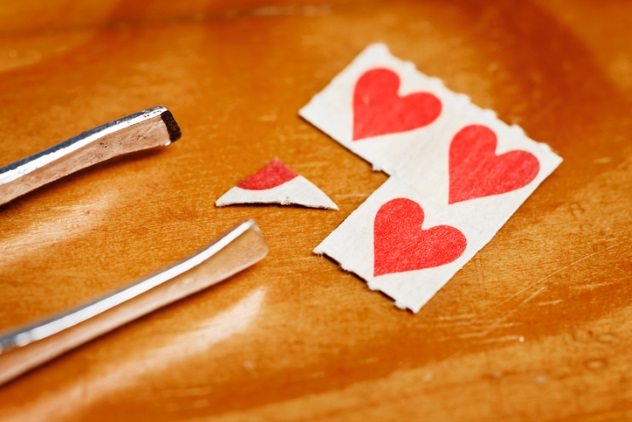
LSD, also known as acid, is short for lysergic acid diethylamide, and its history is almost as fascinating as its effects. Swiss scientist Albert Hofmann synthesized LSD in 1938 while working with ergot, a fungus found on grains. Five years later, he accidentally swallowed some.[9] Hofmann experienced strange shapes and visuals, common effects of LSD. Three days later, he took a larger dose of the substance in what would go down in drug history as the world’s first intentional LSD trip.
LSD is a hallucinogen, giving those under its influence novel auditory, visual, and sensory sensations. The CIA would go on to do some pretty messed up experiments on people using LSD in a program called MK-ULTRA. In terms of toxicity, LSD overdose is almost as unlikely as THC overdose and would require an individual to take 1,000 times the average dose. Yet, while the chemical catalysts may not be deadly, people certainly can do some stupid and dangerous stuff while under the influence of LSD.
2 Psilocybin
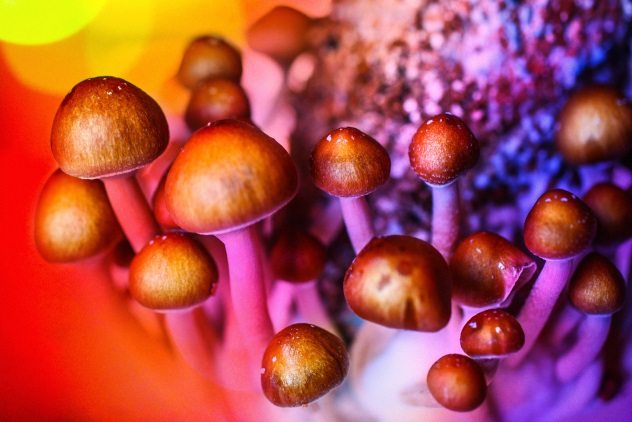
While LSD was discovered in a laboratory setting, our next drug is a naturally occurring psychedelic. Psilocybin can be found in a number of species of mushrooms, colloquially referred to as “magic mushrooms” or “shrooms.” While LSD’s history dates back less than a century, psilocybin-containing mushrooms have been used for their spiritual properties for thousands of years.
In terms of toxicity, pure psilocybin, like LSD, is nearly impossible to overdose from. One would have to take upwards of 1,000 times the average effective dose to die from psilocybin, making it far less lethal than alcohol.[10] When psilocybin was introduced to Western culture, its potential use for mental health treatment was noted, and today, doctors have ignited a renaissance of research into how psilocybin may aid those suffering from a variety of mental illnesses.
1 Mescaline
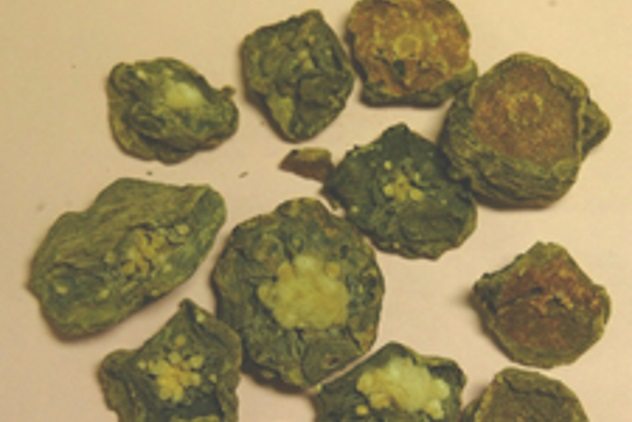
The final drug less deadly than alcohol is mescaline, another hallucinogenic. Intriguingly, it’s far easier to overdose on mescaline than on LSD or psilocybin. So, what exactly is mescaline? Like psilocybin, it’s a naturally occurring hallucinogen, most notably found in the peyote cactus. While chemically unique compared to LSD and psilocybin, use of any of these hallucinogens can cause cross tolerance to the other ones.
Mescaline traces its history back to the Pre-Columbian era. The Aztecs would use peyote for its perceived divine qualities. Bringing this list full circle, some experts believe that mescaline and its hallucinogenic brethren could offer the key to a cure for alcoholism.[11] Cheers to that!
Evan Beck is a freelance writer living in the San Francisco Bay Area.
Read more facts about drugs and alcohol on 10 Reasons Alcohol May Be The Deadliest Drug Of All and 10 Of The Most Illegal Drugs And Their Histories.

